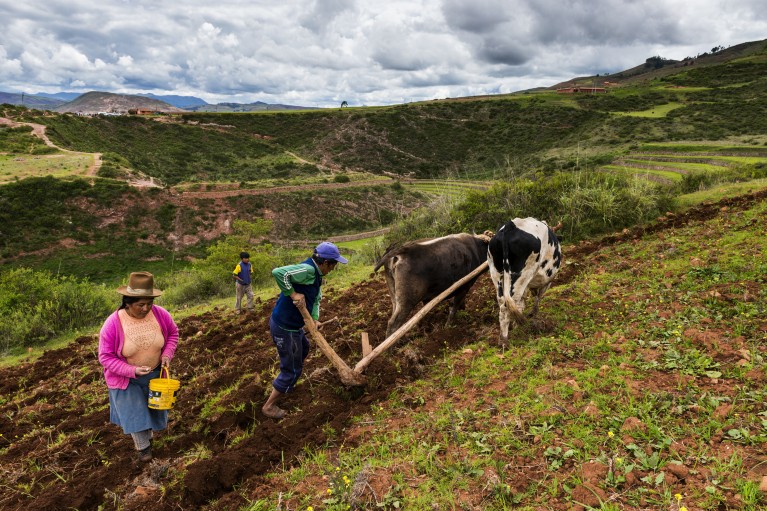
Peruvian family plowing the land near the village of Maras, Peru. Credit: Tiago_Fernandez/ iStock Editorial / Getty Images Plus.
Today’s crops result from domestication that began less than 12,000 years ago when farmers started to select wild plants that were more nutritious, palatable, and easier to grow and harvest than others. Over time, this process has made plants more productive, but has diminished their genetic variability, leaving modern crops vulnerable to climate change and pests.
A study in Nature Plants1 shows that, hundreds of years ago, farmers in the southern Andes had found the right balance between efficiency and variability of their crops – a balance that today’s sustainable agriculture strives for.
The researchers sequenced whole genomes from seeds of the ancient common bean (Phaseolus vulgaris), collected from various archaeological sites in Argentina and dated with radio-carbon between 2500 and 600 years ago. Showing that bean seeds can be a good source of ancient DNA was itself an achievement, they note. They then compared the ancient genomes with the one of modern seeds from across central and southern America, reconstructing the timeline of both domestication and genetic erosion.
The key genomic signatures of domestication, that distinguish the common bean from the wild varieties, were already present in ancient seeds. They include, for example, groups of several genes associated with sugar synthesis and stress response. But those ancient genomes still showed much more genetic variability than their contemporary counterparts.
“Our results introduce the view that selected traits emerged initially without significant loss of genomic variation,” says Emiliano Trucchi, a researcher at Università Politecnica delle Marche, and a co-author of the study. The loss of genetic variability, he explains, occurred mainly with modern breeding in the last century.
Such loss is one of the biggest threats in agriculture because it hampers crop improvement, which is essential in a changing environment and a growing population. “Bean selection by Andean farmers was slow, and possibly accompanied with seeds exchanges between populations” explains Giorgio Bertorelle, associate professor at Università di Ferrara and lead author of the study. “It is not easy to imagine a technique that allows production at today's speed while maintaining necessary genetic variability”. A possibility, he says, lies in new crossing schemes involving international seed banks.
If there were perfect mapping of the correspondences between specific genetic mutations and phenotypic characters, the authors explain, modern gene-editing techniques could be used to obtain the desired characteristics without crossing — which decreases variability.
The trick would be to do what ancient Andean farmers were doing, but faster. To date, however, this map is far from being complete, because many important traits are controlled by several interacting genes, says Trucchi.
